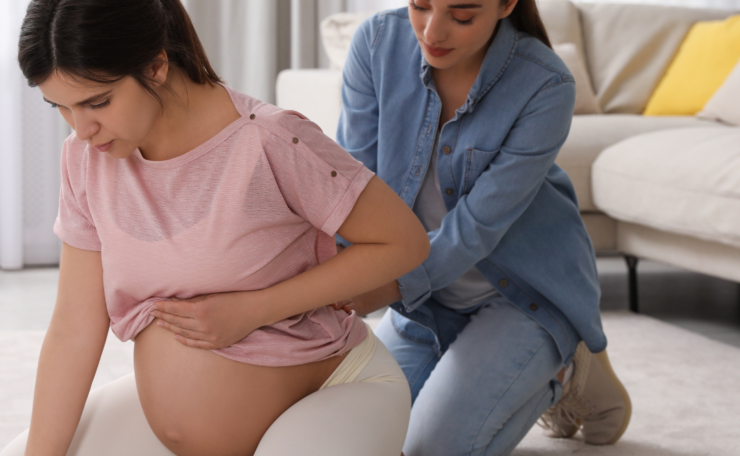Much of the pain women experience during labor is focused in the uterus resulting from the intense contractions that help move the baby down into the birth canal. For some women back pain also occurs and in some cases, can become excruciating. By understanding the causes of “back labor”, you can take steps to better manage the symptoms.
Causes of Back Labor
Back labor has generally been attributed to the baby’s position during labor and the occiput posterior position is often the most likely culprit. In the OP position, the baby’s head is down but is facing toward the mom’s pubic bone causing the harder part of the baby’s skull on the back of the pelvis and along the spine.
This may cause pressure in the nerves and cause pain. Around 10% to 34% of cephalic (head down) presentations are OP at the onset of labor and only 5% to 8% will persist until birth.
There is some research showing that causes other than the baby’s position can 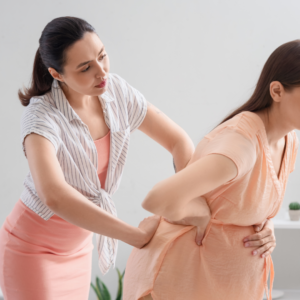 trigger back labor. The size and shape of the mom’s pelvis, the mom’s body size compared to the baby’s body size, postural positions that cause an inward slant to the coccyx and muscles and ligaments that are either too tight or too loose are all thought to contribute to the presence of back pain during labor.
trigger back labor. The size and shape of the mom’s pelvis, the mom’s body size compared to the baby’s body size, postural positions that cause an inward slant to the coccyx and muscles and ligaments that are either too tight or too loose are all thought to contribute to the presence of back pain during labor.
There may also be a link between weight gain during pregnancy and/or body-mass index and back labor. One study found that women who had back pain during their periods might also experience back pain during labor.
Changing the Baby’s Position
Back labor is not uncommon. It occurs in about one-fourth of pregnancies. Most women have some back pain in labor. Many start with low back pain.
The babies who are in the face-up position tend to have to push longer. The OP position is associated with higher rates of induction, augmentation and third and fourth-degree tears. Practitioners may try to change the baby’s position to avoid these outcomes.
Pregnancy Positions
Pregnancy positions use gravity to encourage a fetus into an optimal position. Common positions include sitting or leaning on an exercise ball or using a hands and knees pose – you get on all fours and gently rock back and fort )cat-cow pose). Another would be to prop your hips: Lie on your back on the floor with your knees bent and raise your hips in the air (bridge pose).
You can also try an upright and forward-leaning position to encourage more pelvic space for fetal positioning. Another option is to keep the knees lower than the hips. In this position, it helps to place a pillow behind your back for comfort. You may also find comfort and success while walking or swimming. Gentle exercise encourages natural pelvic movement.
Ways to Relieve Back Labor Pain
An epidural can help relieve some of the pain if you are experiencing back labor. Back pain is often more resistant to the effects of an epidural than uterine labor pains. If the pain persists, or you are hoping for an unmedicated birth, these alternative techniques may help.
Low Back Massage
Low back massage has been proven to reduce pain during labor. Having someone push at or just above the sacrum (tailbone) where you are feeling the most pain may also help. Using a warm pad, a cold pack, a tennis ball or a rolling-pin-like massage device may be useful during back labor, since these can provide more pressure.
Hands-and-Knees Position
This labor position is relatively

easy to do and studies have found it offers pain relieve during labor. When you are on your hands and knees, the baby is tipped slightly out of the pelvis giving it more room to rotate. Another variation of this position is to rest our upper body on your forearms, keeping your buttocks high and your knees wide.
Double Hip Squeeze
While in the open-knee position, have your partner or coach crouch behind you and press on both sides of your buttocks with the palms of the hands, fingers facing inward toward the spine.  Doing so can help the pelvis relax, which can alleviate pain.
Doing so can help the pelvis relax, which can alleviate pain.
Rebozo
A rebozo is a long shawl that can be used in labor in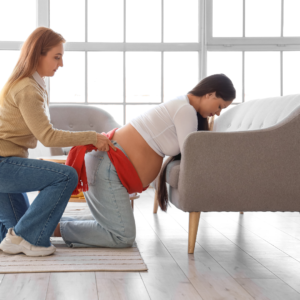 a variety of ways to support a laboring person. The technique has shown promising results. One study found that when the rebozo is used to gently shift the abdomen, it can be a potentially valuable tool to correct malposition. Another study found evidence that using a rebozo during labor resulted in pain relief.
a variety of ways to support a laboring person. The technique has shown promising results. One study found that when the rebozo is used to gently shift the abdomen, it can be a potentially valuable tool to correct malposition. Another study found evidence that using a rebozo during labor resulted in pain relief.
Birth Ball
A birth ball is just like the exercise balls you may have seen in at a gym or in a physical therapist’s office. It can be used in many different ways to ease labor pain. You can sit on it, roll around, bounce on it, or place it against a wall and lean on it – whatever works for you! 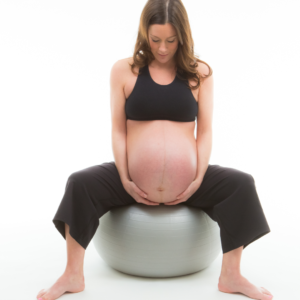
Research found the use of birth balls to be an effective method of reducing pain during labor. In a controlled trial, participants who used a birth ball during pregnancy and labor had shorted first stages of labor, fewer epidurals and a decreased number of c-sections.
Water Therapy
Immersing yourself in a tub can be a great comfort during labor. Or you can assume the hands and knees position in the shower and let the warm water flow on your back. 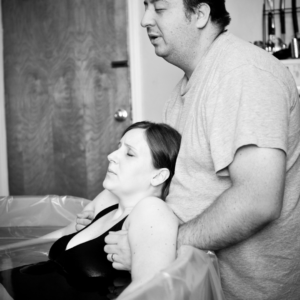 You can place towels on the floor of the shower to make it more comfortable or lean over a birth ball.
You can place towels on the floor of the shower to make it more comfortable or lean over a birth ball.
Hydrotherapy during the first stage of may decrease the length of labor and reduce the need for a spinal or epidural.
Movement
Using upright positions and staying mobile has been found to reduce the length of labor, reduce the need for interventions and reduce pain. Walking, standing and leaning on your partner or 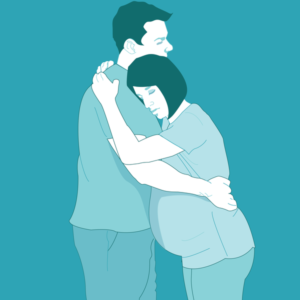 leaning over a chair are good upright positions to try.
leaning over a chair are good upright positions to try.
Another upright technique is called the birth dance. For this, your partner holds you in their arms as if dancing. Allow your arms to hang loosely as you and your partner sway back and forth shifting weight from one leg to the other.
Sterile Water Block
A sterile water block involves the injection of sterile water along the sacrum. While there may be an initial sting, the water block can often provide pain relief for several hours. As an alternative to pharmacological pain relief, it is effective at relieving back pain during labor.
Transcutaneous Electric Nerve Stimulation
Transcutaneous electrical nerve stimulation (TENS) uses small electrical pulses to help disrupt the sensation of pain via electrodes placed on your back. It can offer someone a sense of control during labor.
All labors are different and most are at least a bit uncomfortable or just downright painful. It’s important to lean on your birth team for support, advocate for yourself and no shame if you birth plan gets tossed out the window. Ask for relief you need and empower your birth your birth partner to advocate on your behalf. Back labor is hard so use the tools that are available to you to make it easier.
For more help and guidance for pregnancy, birth, labor and postpartum care, get in touch.

